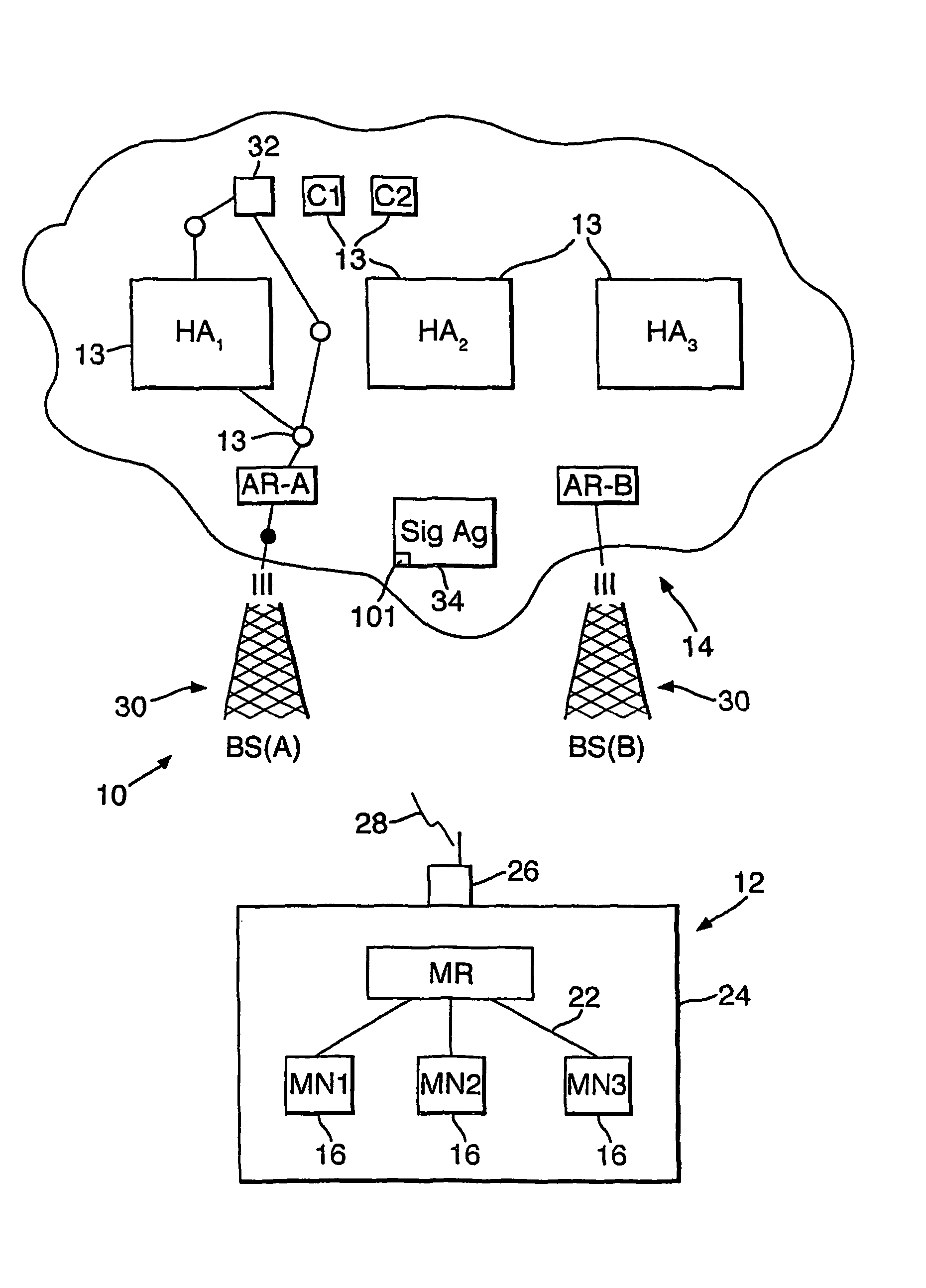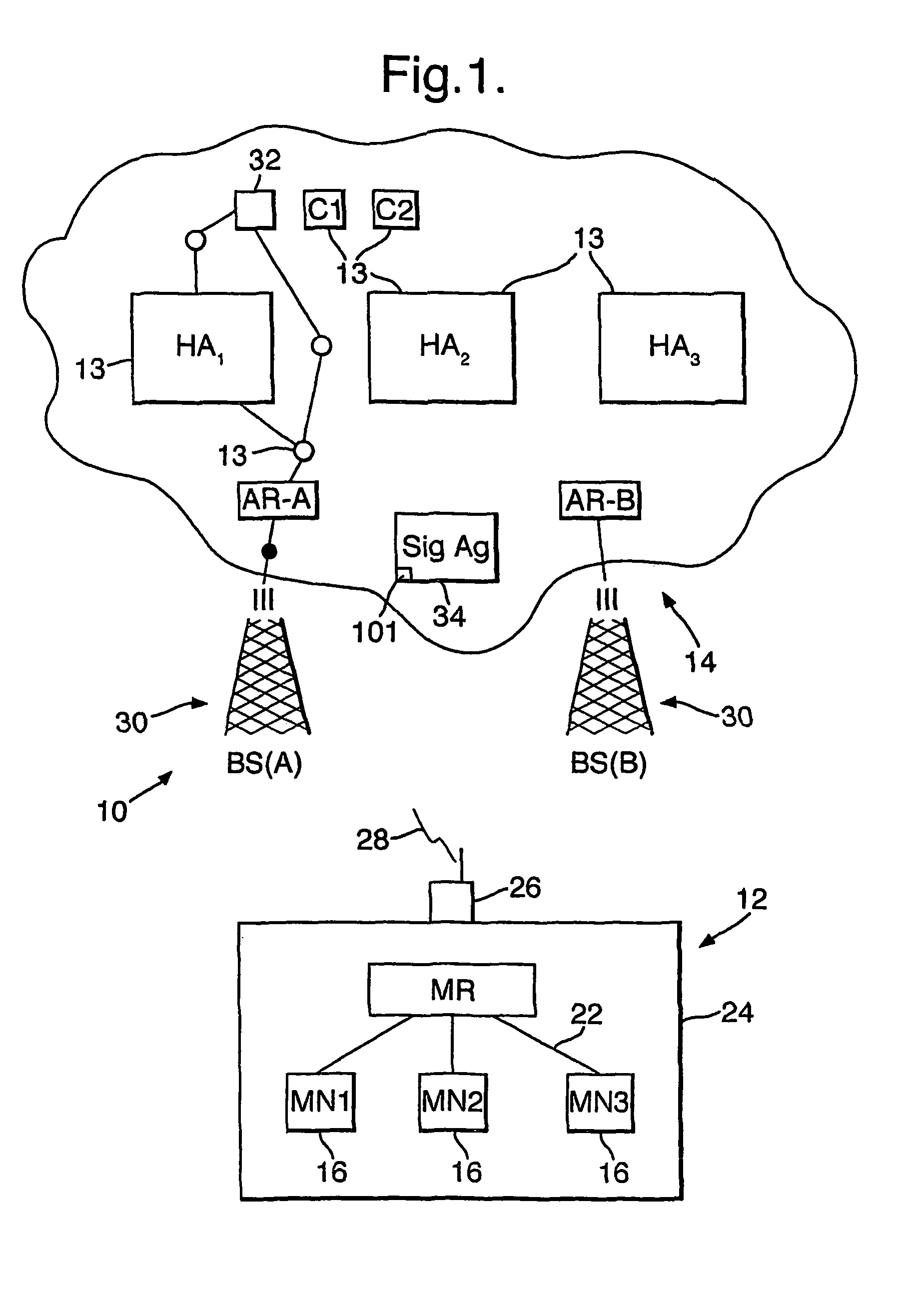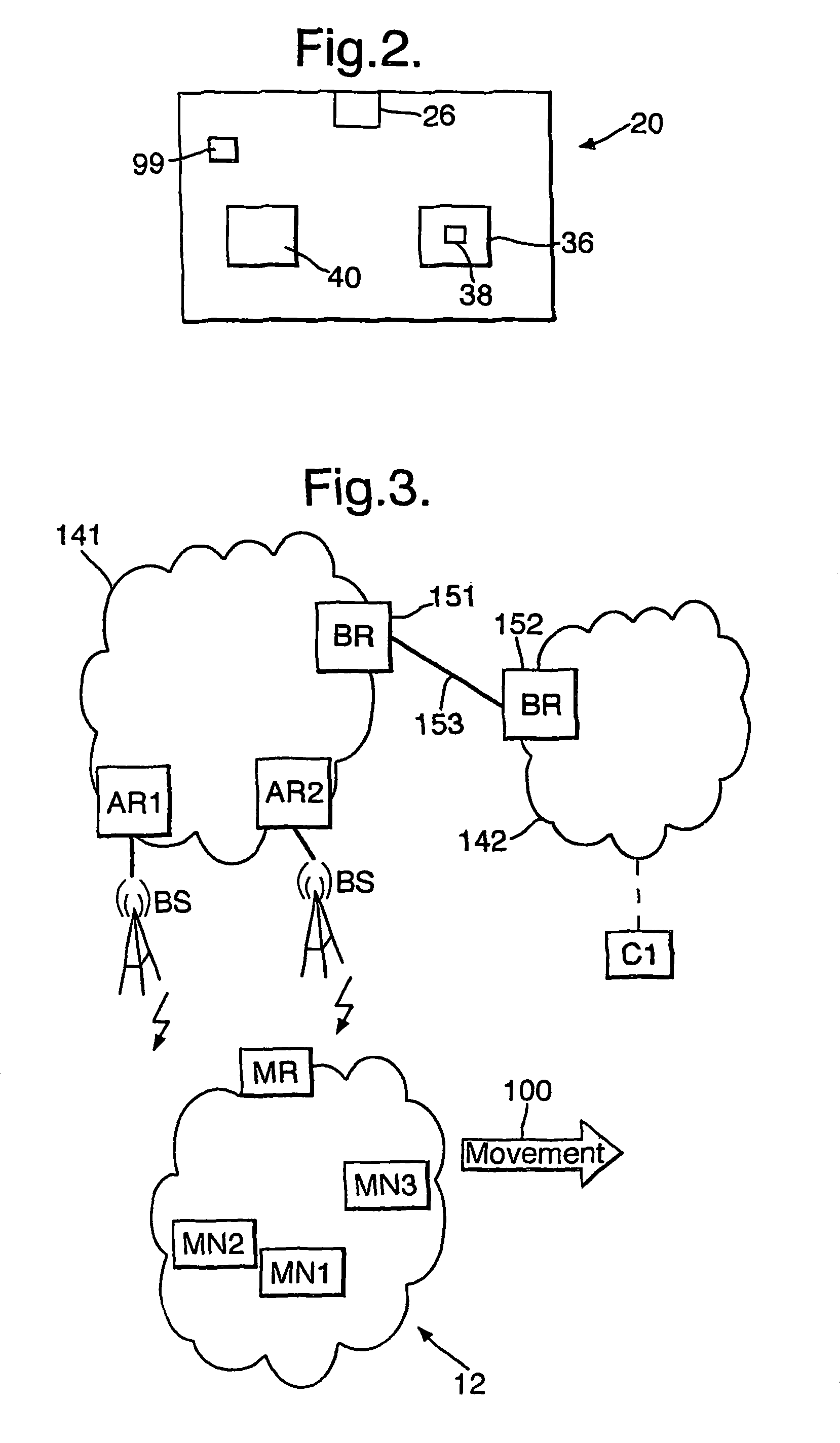Telecommunications system
a technology of telecommunications system and data transmission, applied in the field of telecommunications system, can solve the problems of undesirable changes in the point of attachment, the amount of signalling required between the communication device and the respective directory facility, and achieve the effect of facilitating data routing to the mobile network and easy data routing
- Summary
- Abstract
- Description
- Claims
- Application Information
AI Technical Summary
Benefits of technology
Problems solved by technology
Method used
Image
Examples
Embodiment Construction
[0027]With reference to FIG. 1, it is known to have a prior art network system 10 in which a mobile network 12 can communicate with a fixed (main) network 14, the fixed network having a plurality of nodes 13 which are generally static. (FIG. 1 shows a system according to the present invention but will be used to describe the prior art, like components in the prior art and in the invention being given like numerals). The mobile network 12 includes a plurality of moveable or otherwise mobile nodes 16 (portable devices), each of which is connected to a mobile network 12 by a respective connection 22. A mobile node may for example be a mobile telephone or computer equipment such as a “laptop” computer, or other portable communications equipment, each respective connection 22 to the mobile router being a wired or wireless connection. When the mobile network 12 moves, the mobile nodes 16 move together with the router 20, such that the mobile nodes retain their respective connections 22 wi...
PUM
 Login to View More
Login to View More Abstract
Description
Claims
Application Information
 Login to View More
Login to View More - R&D
- Intellectual Property
- Life Sciences
- Materials
- Tech Scout
- Unparalleled Data Quality
- Higher Quality Content
- 60% Fewer Hallucinations
Browse by: Latest US Patents, China's latest patents, Technical Efficacy Thesaurus, Application Domain, Technology Topic, Popular Technical Reports.
© 2025 PatSnap. All rights reserved.Legal|Privacy policy|Modern Slavery Act Transparency Statement|Sitemap|About US| Contact US: help@patsnap.com



